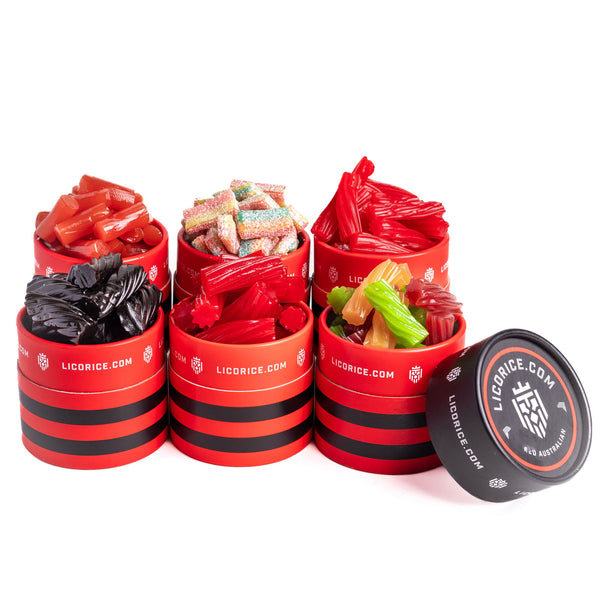By Jillian Dara
The licorice plant is an herbaceous shrub native to western Asia. Though today we know it most commonly as a unique bittersweet candy found in black, red, and every color in between—whose flavor is derived from the licorice root. The plant’s first uses were for medicinal purposes. In fact, licorice is considered one of the oldest herbal remedies globally, dating back to ancient Egypt and traditional Chinese medicine (TCM).
According to a 2012 study by Mercy Hospital and Medical Center,1 in ancient Egypt, licorice was a sweet liquid drink made from the extract of the licorice root’s primary active compound, called glycyrrhiza: “It was indulged upon by many prophets and pharaohs.” The glycyrrhizin extract was renowned not only for its sweet flavor but also its medicinal qualities: an antioxidant, anti-inflammatory, and antimicrobial agent.

In modern science, the plant’s uses have transcended the simple, at-home infusion of licorice root and hot water and have made it to supermarket shelves in the form of tea, powder, over-the-counter supplements, and topical gels to aid with a variety of ailments—anything from minor inconveniences, like allergies and rashes, to more severe illnesses, including peptic ulcers. Here are five of the main health benefits licorice provides and the best ways to consume it to reap the rewards.
Allergies
Whether your allergies come in the form of congestion, a scratchy throat, or exasperated asthma symptoms, including mild upper respiratory discomfort, you’ll want to chew on the root. The raw, unprocessed juices are the fastest way to directly target and alleviate symptoms. The Journal of Agricultural and Food Chemistry2 explains that licorice’s anti-inflammatory properties are mainly responsible for its successful use in treating allergy-related symptoms.
Bacterial or viral infections
Licorice tea is most commonly used to soothe and relieve sore throats caused by infections like strep throat, tonsillitis, or throat irritations caused by postnasal drip or sinus infections. The Biomedicines Journal did a study3 on the treatment of pharyngitis (the medical term for a sore throat with varying causes) and found that licorice root teas exhibited bactericidal effects on strep bacteria within 12 hours of exposure compared with other teas, like oregano or barberry root, which need 24 hours to produce a similar outcome. Licorice root works fast and efficiently to target bacteria, which is why it’s one of the most popular uses in TCM.
Hydration
Another one of licorice’s original uses was as a thirst quencher. Licorice extract was provided to soldiers in hot climates1 to suppress their thirst on long marches. Whether it’s consumed as an extract (often added to small amounts of water), a tea, or by chewing the root, it not only suppresses thirst but also quenches thirst. It’s also said to increase cortisol levels,4 which improve energy levels and thus require fewer means of typical hydration.

Skin conditions
This is where licorice topical gel can shine. From acne to eczema to mosquito bites, licorice’s hydrating and anti-inflammatory properties combine to tackle pesky skin conditions. These qualities are a result of the plant’s three hundred different compounds. The Journal of Dermatological Treatment5 conducted a two-week study on the effect of topical gel containing licorice root in which sixty adults said their eczema “significantly improved”—they reported less itching as well as a diminished presence of dryness on the skin surface.
Stomach woes
This category of benefits covers a wide scope—from nausea to heartburn to ulcers. For an upset stomach, sipping on licorice tea or chewing on the root may settle nausea. For infrequent heartburn, licorice root can be steeped in a tea that can calm the unpleasant burning sensation. Still, for more frequent cases, like in acid reflux or functional dyspepsia, licorice root can be ingested regularly as a capsule for long-term care and pain management.6 This benefit is attributed to licorice’s ability to enhance gastric mucus secretion, which is important because the mucus acts as a barrier to protect the stomach wall from acid and digestive enzymes that are often the cause of heartburn, acid reflux, and dyspepsia (when there’s more mucus, there’s less damage). The increased mucus also encourages licorice’s antiulcer activity as, again, a thick layer of mucus does not allow acid’s easy access to the stomach wall, thus resulting in less damage.
So, licorice is basically an underrated wonder plant! This is simply an introduction to licorice’s extensive health benefits, so we encourage you to experiment with whatever form works best for you, as every person is different.
For more on the author CLICK HERE; for more on the illustrator CLICK HERE
_____________________________________
1 Hesham R. Omar et al., “Licorice Abuse: Time to Send a Warning Message,” Therapeutic Advances in Endocrinology and Metabolism 3, no. 4 (August 2012): 125-38. https://doi.org/10.1177/2042018812454322
2 Tzu-Chein Kao et al., “Bioactivity and Potential Health Benefits of Licorice,” Journal of Agricultural and Food Chemistry 62, no. 3 (January 2014): 542-53. https://doi.org/10.1021/jf404939f
3 Niluni M. Wijesundara et al., “Herbal Tea for the Management of Pharyngitis: Inhibition of Streptococcus pyogenes Growth and Biofilm Formation by Herbal Infusions,” Biomedicines 7, no. 3 (September 2019): 63. https://doi.org/10.3390/biomedicines7030063
4 E A S Al-Dujaili et al., “Liquorice and Glycyrrhetinic Acid Increase DHEA and Deoxycorticosterone Levels In Vivo and In Vitro by Inhibiting Adrenal SULT2A1 Activity,” Molecular and Cellular Endocrinology 336, nos. 1-2 (April 2011): 102-9. https://doi.org/10.1016/j.mce.2010.12.011
5 M Saaedi et al., “The Treatment of Atopic Dermatitis With Licorice Gel,” Journal of Dermatological Treatments 14, no. 3 (September 2003): 153-7. https://doi.org/10.1080/09546630310014369
6 Kadur Ramamurthy Raveendra et al., “An Extract of Glycyrrhiza glabra (GutGard) Alleviates Symptoms of Functional Dyspepsia: A Randomized, Double-Blind, Placebo-Controlled Study,” Evidence-Based Complementary and Alternative Medicine 2012 (2012): 216970. https://doi.org/10.1155/2012/216970
















